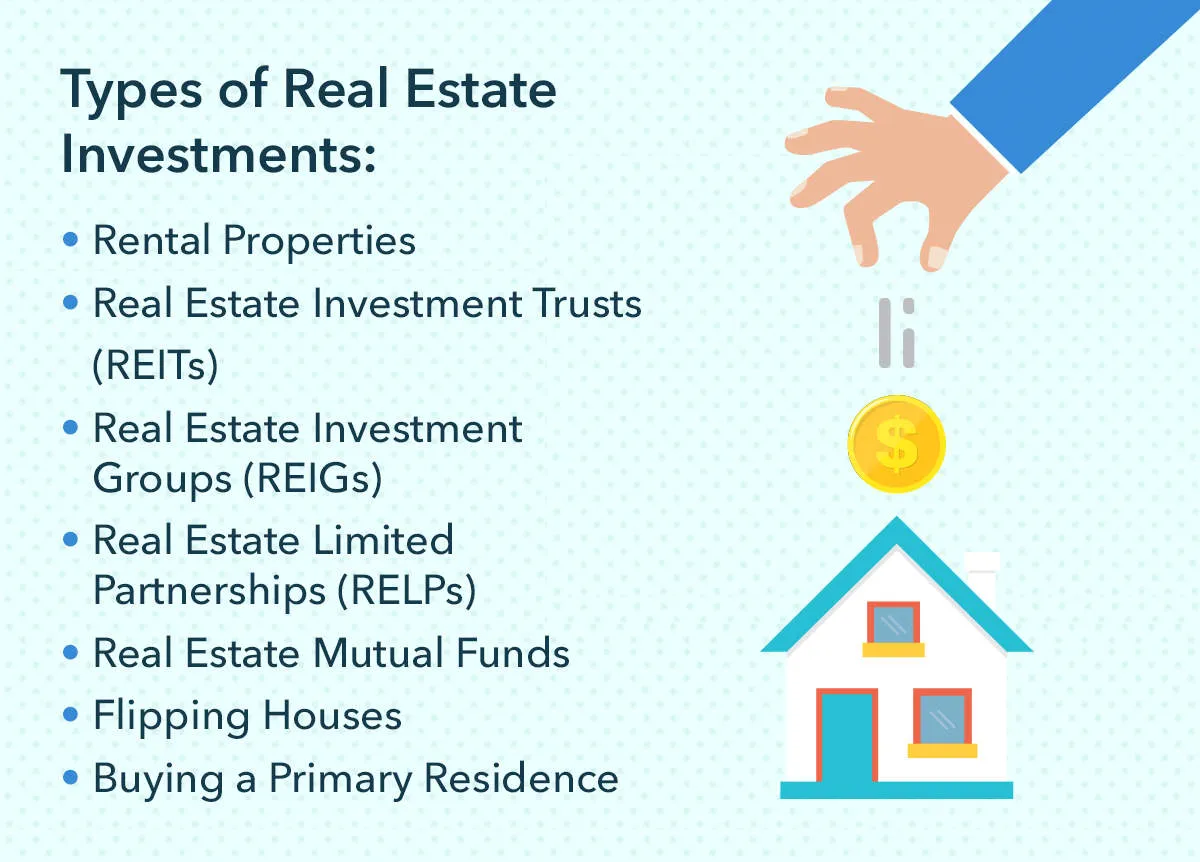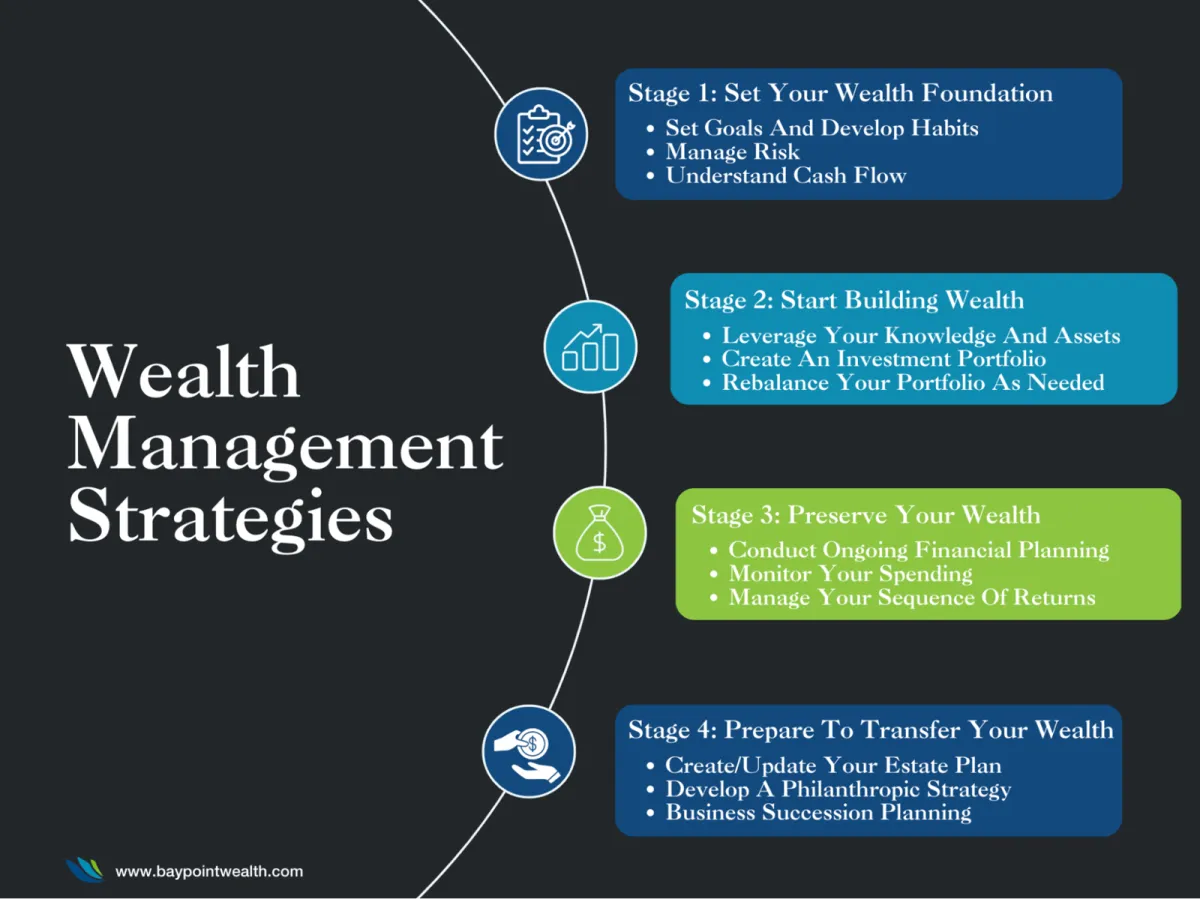Discover the essential strategies and tips on how to build long-term wealth through smart real estate investments. From market analysis to property selection, learn how to grow your financial portfolio with real estate.
Benefits of Real Estate Investing
Investing in real estate can be a lucrative way to build wealth, offering a unique combination of financial advantages. Here are some key benefits:
Cash Flow and Passive Income
One of the most attractive aspects of real estate investing is the potential for generating passive income. Rental properties can provide a steady stream of cash flow, covering mortgage payments, property taxes, and other expenses while still leaving you with a profit. This consistent income stream can contribute significantly to your overall financial well-being.
Appreciation Potential
Real estate has historically shown an upward trend in value over the long term. While market fluctuations can occur, properties tend to appreciate in value over time, allowing you to build equity and potentially benefit from capital gains when you decide to sell.
Tax Advantages
Real estate investors can take advantage of various tax benefits, such as deductions for mortgage interest, property taxes, depreciation, and other expenses related to owning and operating rental properties. These tax advantages can help reduce your tax liability and increase your overall returns.
Inflation Hedge
Real estate is often considered a good hedge against inflation. As the cost of living rises, so do rental rates and property values. This means that your real estate investments can help protect your purchasing power and preserve your wealth in the face of inflation.
Leverage and Equity Building
Real estate investing allows you to use leverage, meaning you can purchase a property with a portion of your own money (down payment) and borrow the rest from a lender. As you make mortgage payments, you gradually build equity in the property, increasing your ownership stake over time.
Portfolio Diversification
Diversification is essential for any well-rounded investment portfolio, and real estate can play a valuable role in spreading your risk. By adding real estate to your portfolio, you can reduce your overall investment volatility and potentially enhance your returns.
Tangible Asset
Unlike stocks or bonds, real estate is a tangible asset. You can physically see and touch your investment, which can provide a sense of security and control. Owning a tangible asset like real estate can be particularly appealing during times of economic uncertainty.
Types of Real Estate Investments

Real estate investing offers a diverse range of options to suit various investment goals and risk tolerances. Here are some common types of real estate investments:
1. Residential Real Estate
Residential properties are typically single-family homes, townhouses, condos, or apartments intended for individuals and families to live in. This type of investment can generate income through rental income or appreciation in value over time.
2. Commercial Real Estate
Commercial real estate encompasses properties used for business purposes, such as office buildings, retail spaces, shopping malls, and hotels. Investing in commercial properties often involves higher initial investments but can potentially yield significant rental income and long-term appreciation.
3. Industrial Real Estate
Industrial properties include warehouses, factories, storage facilities, and distribution centers. This sector often caters to businesses involved in manufacturing, logistics, and distribution. Industrial real estate can be a stable investment option with the potential for long-term leases and steady cash flow.
4. Land
Investing in vacant land can be a long-term strategy, allowing investors to develop the land for various purposes or hold onto it for potential appreciation in value. Land investment requires careful consideration of factors like zoning regulations, market demand, and development costs.
5. Real Estate Investment Trusts (REITs)
REITs are companies that own, operate, or finance income-generating real estate. They allow investors to invest in a diversified portfolio of properties without directly owning or managing them. REITs trade on stock exchanges, providing liquidity and potential dividends to investors.
How to Choose Investment Properties
Selecting the right investment property is crucial to your success in real estate. It’s not a one-size-fits-all approach; the ideal property depends on your financial situation, risk tolerance, and investment goals. Here’s a breakdown of key factors to consider:
1. Location, Location, Location
This real estate mantra holds true for investment properties. Research areas with:
- Strong Rental Demand: Look for areas with a high occupancy rate, indicating a desirable place to live.
- Job Growth: A thriving job market attracts renters and contributes to property value appreciation.
- Good Schools and Amenities: Proximity to quality schools, parks, restaurants, and shops attracts tenants.
- Low Crime Rates: Safety is paramount for renters and impacts property values.
2. Property Type
Determine which property type aligns with your investment strategy and resources:
- Single-Family Homes: Easier to manage and appeal to a broad renter base.
- Multi-Family Properties (Duplexes, Triplexes, Apartments): Offer multiple income streams but require more management.
- Condominiums: Lower maintenance but subject to HOA fees and regulations.
- Commercial Properties: Can provide higher returns but often require significant capital.
3. Analyze the Numbers
Investing in real estate requires a thorough financial analysis:
- Cash Flow: Calculate potential rental income against expenses like mortgage, taxes, insurance, and maintenance to ensure positive cash flow.
- Cap Rate: This metric helps you compare investment properties. A higher cap rate generally indicates a better potential return on investment.
- Cash-on-Cash Return: This measures the return on your initial cash investment, considering financing.
4. Property Condition
Conduct a thorough inspection or hire a professional to assess the property’s condition. Factor in potential repair or renovation costs before making an offer.
5. Future Potential
Consider the property’s potential for appreciation. Research local development plans, infrastructure projects, and market trends that could impact future value.
Financing Your Real Estate Investments

Securing the right financing is crucial for successful real estate investing. Here’s a breakdown of common financing options:
1. Mortgages
Traditional mortgages are prevalent for both residential and commercial properties. They offer long-term financing with fixed or adjustable interest rates.
Key Considerations:
- Down Payment: Typically ranges from 10% to 20% of the property value.
- Credit Score: A good credit score secures favorable interest rates.
- Debt-to-Income Ratio (DTI): Lenders assess your ability to repay the loan based on your income and existing debt.
2. Hard Money Loans
Hard money loans are short-term loans offered by private lenders, often used for property flipping or when traditional financing is unavailable.
Key Considerations:
- Higher Interest Rates: Compared to conventional mortgages.
- Shorter Repayment Terms: Usually within 1 to 3 years.
- Property as Collateral: The loan is secured by the property itself.
3. Private Lending
Private loans are obtained from individuals or groups, offering flexibility in terms and conditions.
Key Considerations:
- Relationship-Based: Often involves borrowing from family, friends, or personal networks.
- Negotiated Terms: Interest rates, repayment schedules, and other conditions are negotiated between the parties.
- Due Diligence: Thoroughly vet potential lenders and document the loan agreement.
4. Partnership
Pooling resources with partners can provide shared capital and expertise for real estate investments.
Key Considerations:
- Clear Agreement: Establish a comprehensive partnership agreement outlining responsibilities, profit sharing, and exit strategies.
- Aligned Goals: Ensure partners share similar investment objectives and risk tolerance.
- Communication: Maintain open and transparent communication throughout the investment journey.
Managing Rental Properties
Once you’ve acquired your rental properties, effective management is crucial for maximizing returns and minimizing stress. Here’s a closer look at key aspects of rental property management:
1. Tenant Screening and Selection:
Finding reliable tenants is paramount. Implement a rigorous screening process that includes background checks, credit history reviews, employment verification, and reference checks. A thorough screening process can save you from potential headaches down the line.
2. Lease Agreements:
A well-drafted lease agreement is your protection. Ensure your lease clearly outlines all terms of the rental agreement, including rent payments, security deposit details, maintenance responsibilities, and rules regarding pets, smoking, and other factors.
3. Rent Collection and Finances:
Establish a streamlined rent collection system. Consider online payment options for convenience. Maintain accurate financial records for all income and expenses related to your properties. This will be crucial for tax purposes and tracking your investment’s performance.
4. Property Maintenance:
Regular maintenance preserves your investment and keeps tenants happy. Be proactive in addressing repairs promptly. You can choose to handle maintenance yourself or hire a property manager to handle it for you.
5. Communication with Tenants:
Open and clear communication is essential for a positive landlord-tenant relationship. Respond to tenant requests and concerns promptly and professionally. Keep tenants informed about any property-related matters.
6. Legal Compliance:
Familiarize yourself with local landlord-tenant laws and ensure you are in compliance with all regulations. This includes fair housing laws, security deposit regulations, and eviction procedures.
7. Property Management Software:
Consider using property management software to streamline tasks such as rent collection, tenant communication, maintenance tracking, and financial reporting. This can save you significant time and effort, especially as your portfolio grows.
8. Hiring a Property Manager:
If managing your properties becomes overwhelming, hiring a professional property manager can be a wise decision. They can handle all aspects of day-to-day management, from finding tenants to handling repairs and collecting rent, for a fee.
Understanding Real Estate Market Trends

Real estate investing isn’t just about buying properties; it’s about making smart decisions in a dynamic market. Understanding market trends is crucial for identifying opportunities and mitigating risks. This involves analyzing various factors that influence property values and investment potential.
Key Market Indicators to Watch:
- Supply and Demand: A fundamental concept in economics, supply and demand heavily influence real estate prices. High demand coupled with limited supply drives prices up, while an oversupply can lead to stagnation or depreciation.
- Interest Rates: Fluctuations in interest rates directly impact borrowing costs for mortgages. Lower interest rates generally make borrowing more attractive, potentially increasing demand and property values.
- Economic Growth: A thriving local economy, characterized by job growth and business expansion, often fuels demand for housing and commercial real estate, positively impacting the market.
- Demographic Trends: Population growth, age distribution, and migration patterns all contribute to housing needs. Understanding these trends can reveal emerging markets or areas with declining demand.
- Government Policies: Tax incentives, zoning regulations, and infrastructure projects can significantly impact real estate markets. Favorable policies can stimulate development and attract investment.
Resources for Market Research:
Staying informed is key to making sound investment decisions. Utilize resources like:
- Real Estate Portals: Websites like Zillow, Realtor.com, and Redfin provide valuable data on property listings, recent sales, and market trends.
- Local Government Data: City and county websites often offer insights into demographic trends, building permits, and economic development plans.
- Real Estate Agents: Experienced agents possess local market knowledge and can provide valuable insights into specific neighborhoods or property types.
By carefully analyzing these indicators and utilizing available resources, investors can gain a clearer picture of current market conditions and make informed decisions aligned with their investment goals.
Tax Benefits of Real Estate Investing
Real estate investing offers a number of enticing tax advantages, making it an attractive vehicle for building wealth. Here are some of the key tax benefits:
1. Depreciation Deductions
One of the most significant tax benefits is the ability to depreciate residential rental properties over 27.5 years. Depreciation allows you to deduct a portion of the property’s value from your taxable income each year, even though the property is likely appreciating in value. This can result in significant tax savings.
2. Deductible Expenses
Real estate investors can deduct a wide range of operating expenses associated with their rental properties, including:
- Mortgage interest
- Property taxes
- Insurance premiums
- Repairs and maintenance
- Property management fees
- Utilities (if paid by the landlord)
- Advertising and marketing
These deductions can significantly reduce your taxable income from rental properties.
3. Capital Gains Exclusions
When you sell a primary residence, you may be eligible to exclude up to $250,000 of capital gains from federal income tax ($500,000 for married couples filing jointly). This exclusion can save you a substantial amount of money in taxes.
4. 1031 Exchange Deferrals
Real estate investors can use a 1031 exchange to defer capital gains taxes when selling one investment property and reinvesting the proceeds into another “like-kind” property. This allows you to keep your investment capital working for you without incurring an immediate tax liability.
5. Long-Term Capital Gains Rates
If you hold onto an investment property for longer than a year before selling it, any profits you make will be taxed at the lower long-term capital gains rates, which are generally more favorable than ordinary income tax rates.
Disclaimer: Tax laws are subject to change, and individual circumstances vary. It’s always advisable to consult with a qualified tax professional for personalized advice regarding your specific situation.
Long-Term Wealth Building Strategies

Real estate investing offers several avenues for building long-term wealth. Here are some strategies to consider:
1. Buy and Hold
This classic strategy involves purchasing properties and holding them for an extended period, generating ongoing rental income and benefiting from property appreciation over time. Key advantages include:
- Passive Income: Collect consistent rental income, covering mortgage payments and potentially generating positive cash flow.
- Appreciation: Real estate values tend to rise over the long term, building equity and increasing your net worth.
- Tax Advantages: Benefit from tax deductions on mortgage interest, property taxes, and depreciation.
2. Value-Add Investing
This strategy involves acquiring undervalued properties with the potential for improvement. By renovating, upgrading, or repositioning the property, you can increase its value and generate higher rents or sales prices. This strategy requires:
- Due Diligence: Thoroughly assess the property’s condition and potential for improvement.
- Renovation Expertise: Manage or oversee renovation projects effectively, staying within budget and timelines.
- Market Knowledge: Identify tenant demands and market trends to maximize the property’s value.
3. Real Estate Investment Trusts (REITs)
REITs offer a way to invest in real estate without directly owning physical properties. By purchasing shares in a REIT, you gain exposure to a diversified portfolio of income-producing properties. REITs:
- Provide Liquidity: Shares are traded on stock exchanges, offering easier buying and selling compared to physical properties.
- Offer Diversification: Invest in various property types and geographic locations, reducing risk.
- Generate Dividends: REITs typically distribute a significant portion of their taxable income to shareholders as dividends.
4. Long-Term Land Banking
This strategy involves purchasing undeveloped land in areas projected for future growth. While it requires patience and careful planning, land banking can yield substantial returns as the land appreciates in value. Factors to consider include:
- Zoning Regulations: Understand local zoning laws and future development plans for the area.
- Infrastructure: Assess the availability of utilities, roads, and other infrastructure essential for development.
- Market Demand: Research future housing or commercial demand in the area to ensure long-term value appreciation.
Conclusion
In conclusion, real estate investments offer a proven path to building long-term wealth through property appreciation and rental income.

